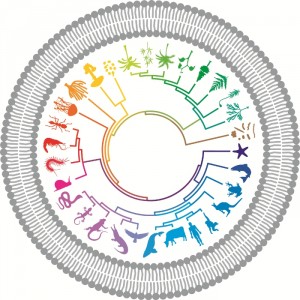
The problem of antibiotic resistance, recently described as “apocalyptic” by Sally Davies, Chief Medical Officer of the UK, is getting worse and cannot be expected to get better quickly. In a Question and Answer article in BMC Biology, Gerard Wright explains the reasons for the worsening situation, and why, despite the acute need, there are few new antibiotics on the horizon.
Antibiotic resistance is a natural and ancient phenomenon, and the emergence and spread of resistance in human pathogens inevitable, he argues, though widespread clinical and agricultural use of antibiotics makes it much worse; and the problem can only be met by the development of new drugs.
The point that antibiotic resistance predates our development of antibiotic drugs was made in an earlier Q&A in which Wright explored the mechanisms and origins of antibiotic resistance – it is prevalent in bacteria that live in the environment, for example in the soil microbes from which almost all of our antibiotic products are derived. He can now cite a more recent study confirming that the resistance genes we see in human pathogens are the same as those found in environmental bacteria, presumably as a defence against antibiotic products of their microbial neighbours – the very same products that are exploited by us for antimicrobial drugs. And the antiquity of resistance is illustrated by his own recent finding of resistance genes in the microbial community of a cave sealed from the surface 4 million years ago. The news that multi-resistant bugs have been found on American supermarket shelves thus clearly does not necessarily (as pointed out by the US FDA) imply a disease outbreak in the making – pathogens do not have a monopoly of resistance genes.
So if antibiotic resistance genes are everywhere, and can spread easily – what can we do about it? Wright’s answer, to which he has effectively devoted his career, is to keep discovering new antibiotics, or new ways to make old ones effective again. The problem here, he explains, IS manmade. Not a shortage of good ideas, or new compounds with drug potential, but a regulatory and incentive structure that is ill adapted to support the development of these drugs and get them quickly to the pharmacy. Perhaps most important is a bias towards the development of broad spectrum drugs, which has served the industry well in the past, but which limits the number of suitable lead compounds and – it can be argued – has helped promote both the spread of resistance and undesirable side-effects such as antibiotic-induced colitis, due to an indiscriminate effect on the patient’s microbiome.
Despite his conclusion that things will get worse before they can get better again, Wright points to some glimmers of hope. The Generate Antibiotic Incentives Now (GAIN) Act passed in in the US in 2012 has special provisions for antibiotics against resistant bacteria as well as measures designed to help fast-track new drugs. More recently, further reforms to clinical trial requirements have been proposed by the pharmaceutical industry. There are already some drugs that are benefiting from the GAIN Act, including two new drugs that will treat Clostridium difficile, bacteria that are notoriously causing complications after treatment with broad-spectrum antibiotics in a hospital setting.
Seventy years after antibiotics were first brought to market, it is hard to imagine where we would be if they cease to be effective. The erosion of their efficacy is ongoing, but Wright gives us reason to believe that the inevitable problem of resistance can be successfully met.
Penelope Austin
Latest posts by Penelope Austin (see all)
- Economists listen to Ecologists: On Biology at the World Economic Forum - 9th March 2018
- The secret language of behavior - 31st January 2017
- Restoring a lost microbiome to a model worm - 12th May 2016
Comments